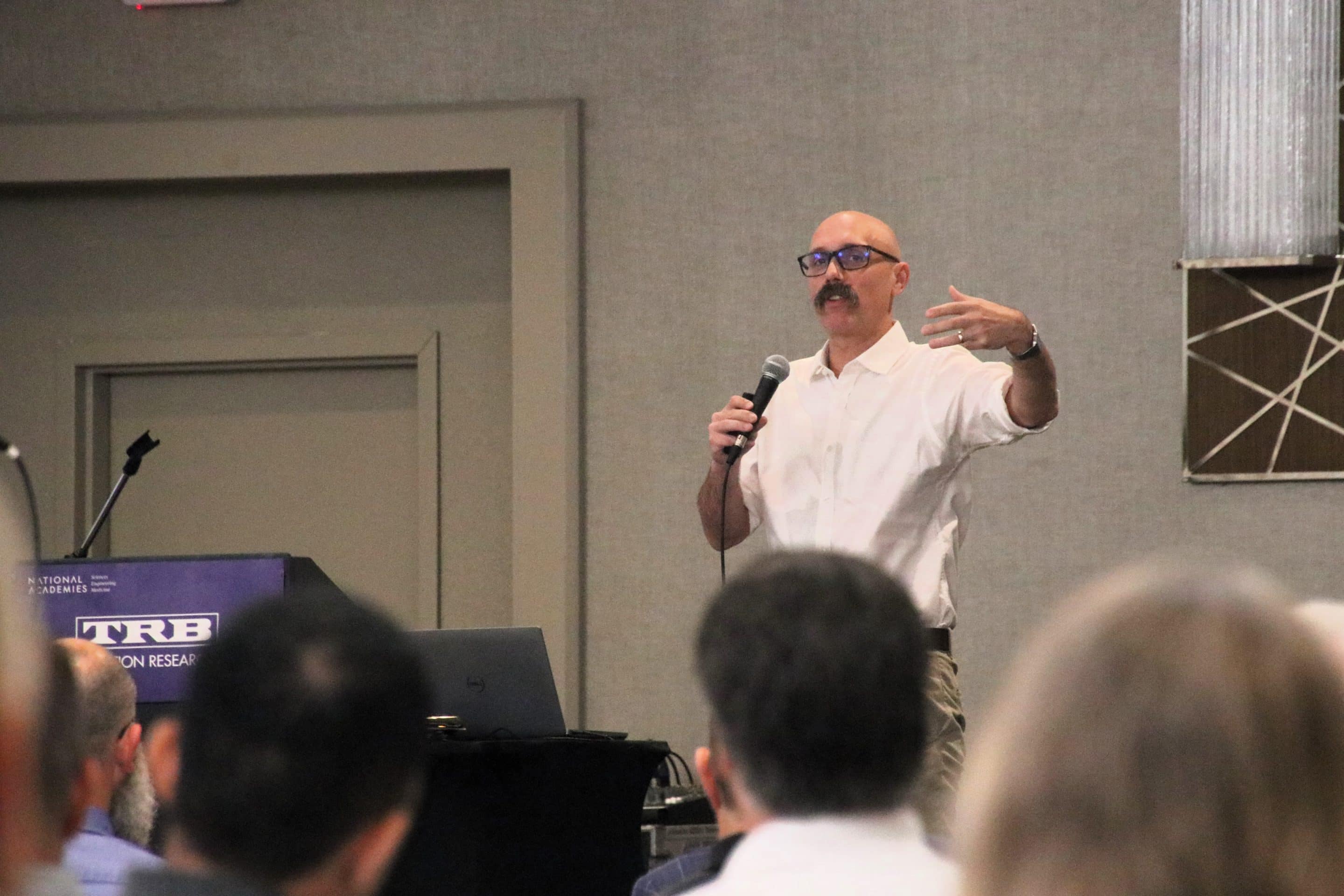
By Kenn Beer, Safe System Solutions Principal Engineer
When we think about workplace safety, there’s no question that we need to put reasonable measures in place to prevent injuries and death while we’re at work.
So why doesn’t society view safety on our roads in the same way?
It’s a question I posed during my keynote address at the Transport Research Board 2nd International Roadside Safety Conference (IRSC).
We have a longstanding legacy of blaming the driver, rider or pedestrian for incidents on our roads. But the reality is that we can put a system in place that prevents injuries and death on our roads, just as we have in the workplace.
The Safe System approach is globally recognised as best-practice to improve road safety by shifting from this pathological safety culture (where it’s up to everyone to protect themselves the best they can) to a more genuine safety culture. One that not only reduces the chance of crashes, but also reduces their severity when they do occur.
For too long in the management of our roads and streets, the focus has been squarely on the chance of crashes and preventing them from happening. It’s important this continues, but we can’t stop there – because no matter how much effort we put into preventing crashes, mistakes are part of being human, and crashes will inevitably happen.
To reduce road trauma, we must analyse and manage risk appropriately and realistically – by both thinking about how we can minimise crashes and minimise the harm in crashes that do happen. We do this by understanding how much force the human body can handle in different crash scenarios through an in-depth understanding of the biomechanics of injury.
As an example, leaving the road and hitting a tree at 80km/h would be as much force as driving a car off the seventh storey of a building. Having a roadside ‘clear zone’ can provide an area for drivers who leave the road to recover and continue their journey – but some may not be able to recover and will strike trees, power poles, culverts or even roll over. All of which can impart energy far greater than the human body can handle.
Taking a Safe System approach would mean protecting a high-speed road like this with a correctly designed barrier system to manage the energy of a crash when a driver does leave the road, reducing its severity and minimising the risk of injury and death.
This is also the case for cross centreline crashes – instead of painting a line and hoping there isn’t a vehicle coming the other way, a barrier down the middle of the road reduces the risk and severity of a head-on crash if the worst case scenario does happen.
Or to go back to the seven-storey building example, it’s the difference between widening the balcony width, painting a white line and simply telling people to stay behind it – or installing a correctly designed railing system.
If a driver mistakenly veers out of their lane, which do you think would be more effective?
Gain a deeper understanding of the Safe System philosophy, managing roadside hazards and more through our Safe System Assessment training.
